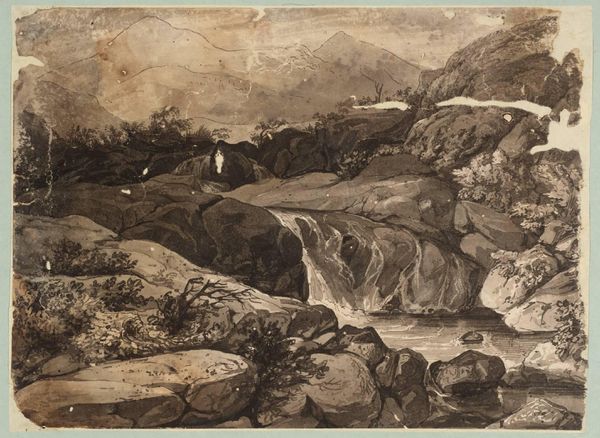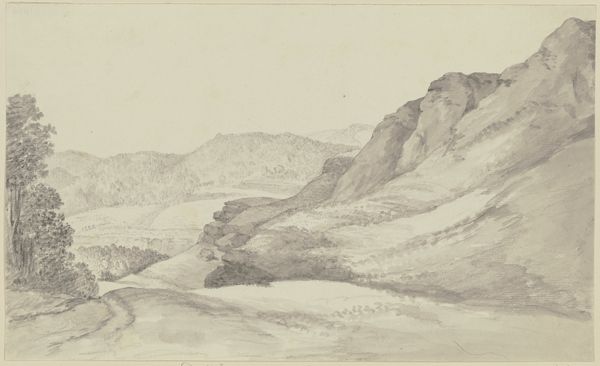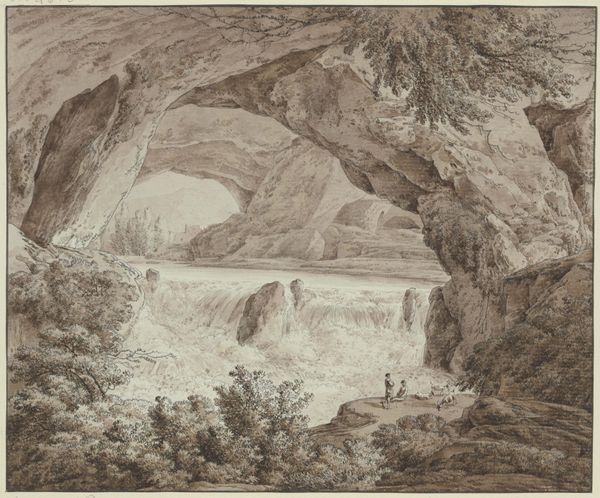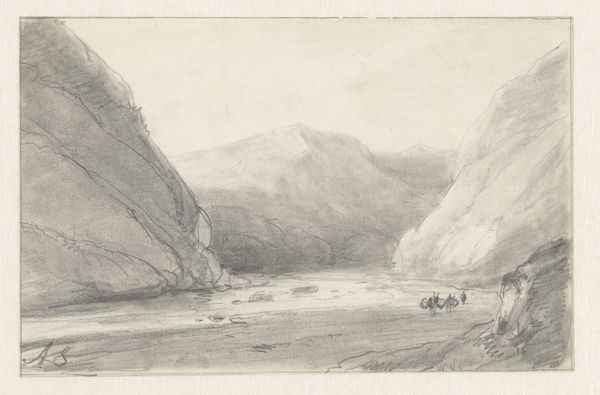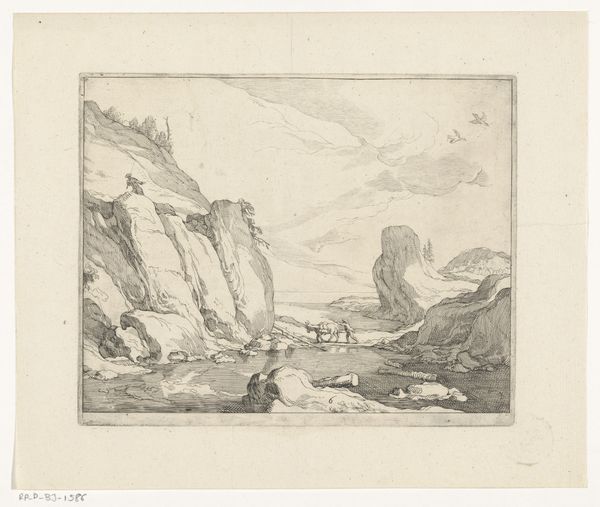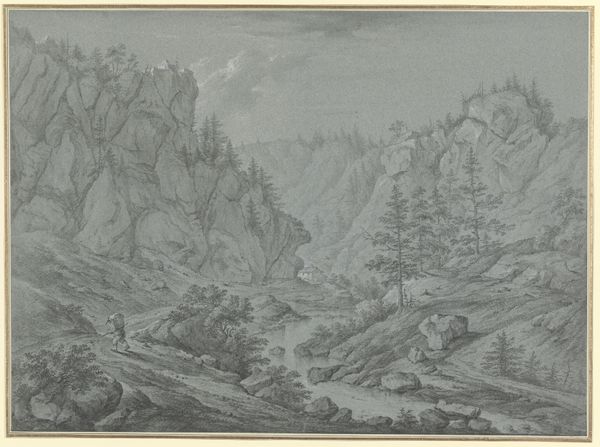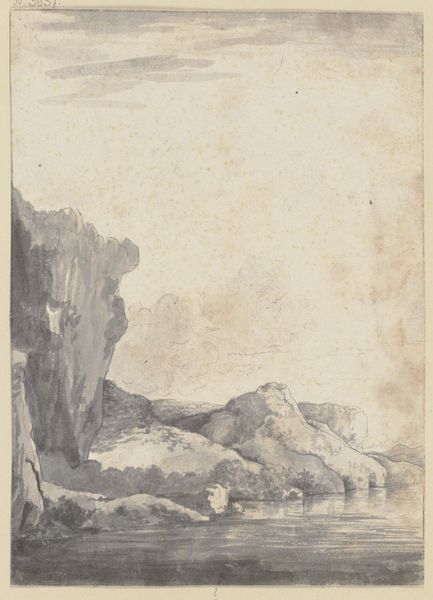
drawing, paper, ink, graphite, pen
#
drawing
#
landscape
#
figuration
#
paper
#
ink
#
geometric
#
classicism
#
line
#
graphite
#
pen
#
picturesque
#
history-painting
#
realism
Copyright: Public Domain
Editor: So, this is "Wasserfall bei Luce (Beaufort-sur-Doron, Savoyen)", a landscape drawing by Dupon. It looks like it's done in ink, graphite, and pen on paper. There's this waterfall, obviously, some rocks, and two tiny figures at the bottom. It feels...very classical in its composition and it appears kind of sublime, though somewhat eerie with all the dead trees. What do you see in this piece? Curator: I see a dialogue between the ideal and the real, and I immediately question whose gaze constructs this scene and for what purpose. The picturesque waterfall and the classically-composed landscape invite us into a romantic vision of nature. But those charred trees, a striking detail, hint at environmental disruption, perhaps due to resource extraction. What does the sublime mean when nature itself is under threat? Editor: That's a really interesting point. I hadn’t considered the deforestation in that way. Do you think the presence of the figures relates to that as well? Curator: Absolutely. They seem placed to give scale, emphasizing the grandeur, the untouched essence, of the landscape, however there presence also indicates claims to resources and territory. It encourages us to examine the power dynamics at play when depicting landscapes. Who has access? Who benefits? And whose story remains untold? Consider the absence of any industry here, or the labour required to support the elite who may be viewing the falls as purely an aesthetic spectacle. Editor: Wow, I didn't see all that when I first looked at it. So, it’s not just a pretty picture; it's prompting us to think about social and environmental histories. Curator: Precisely! And to question the narratives we inherit and the responsibility we have to create new ones. It prompts a critical dialogue. Editor: That’s a fantastic point. It definitely makes you consider the hidden layers behind the facade. Curator: Yes, this piece shows the necessity for intersectionality, for questioning presumed artistic, historical or even art historical truth, because every object or art comes from a particular vantage.
Comments
No comments
Be the first to comment and join the conversation on the ultimate creative platform.

